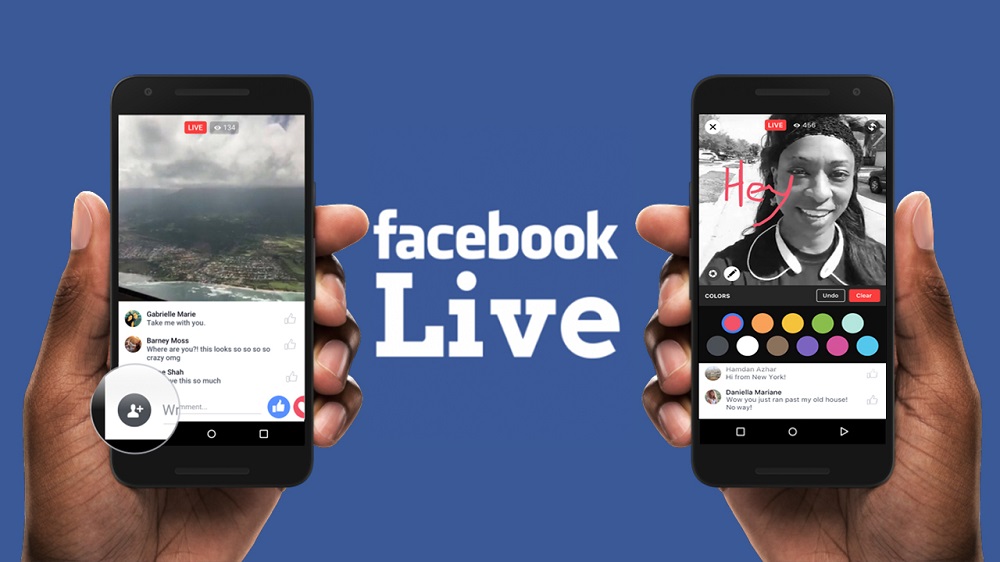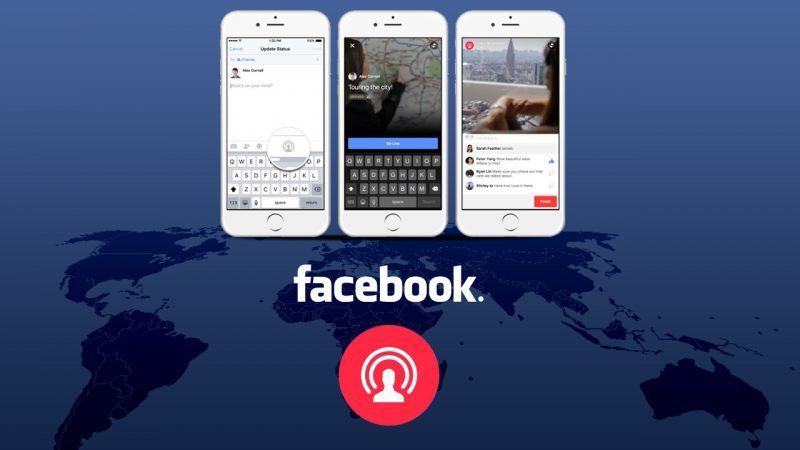
By now, you must have noticed that Facebook is pushing hard on its live video feature, and they’re taking it very very seriously. One way to look at it is that the social media giant is keeping ahead of Twitter, who just recently rolled out it’s Explore app, which prioritizes live videos over other content.
It’s also a telling sign that the two platforms are working hard to outdo the other and keep their users onsite longer. Facebook recently teamed up with The New York Times to contribute live video broadcasts directly to its Facebook Live feature. Twitter missed out on that one, but you can be sure they’ll grab up other news media sites.
We’re in what’s called the ‘digital war’ as millennials are abandoning traditional pay-TV services for online video streaming. It’s gotten cheaper while industry stalwart Comcast / Xfinity continues gouging customers with numerous fees and wondering why they’re losing money.
Besides Facebook, Twitter, and Alphabet (GOOGL), traditional pay-TV providers such as Dish Network, Time Warner, AT&T and Verizon (VZ) are also expanding to the digital video space.
In the social live video space, Twitter made an earlier move with Periscope. But Facebook has become disruptive in that space. With Explore, Twitter hopes it can protect against a disruptive Facebook Live. Twitter said Explore will initially be available for users of Apple’s iOS before being rolled out to other platforms.
Other than making live videos easily available, Twitter and Facebook are also in the race to woo video publishers by adopting monetization formats that they believe are friendly to publishers.
From billboards to TV ads to endless notifications, Facebook is furiously promoting its live video feature as it tries to get more users to shoot and watch such videos.
But will it be a big business for the social network? The prospects for advertisers are uncertain, and even when users do “go live” – broadcasting their toddler’s first steps to family or showing footage from protests around the world, for instance – their friends often don’t see it until after the fact, just like any other recorded video.
So why all the big fuss?
FISHING FOR USERS IN THE LIVE STREAM
Some analysts believe it’s just another in Facebook’s ongoing efforts to keep people attached to its service as long as possible. “It’s a usage thing – keeping them engaged, keeping them on Facebook, giving them an avenue to share,” says eMarketer analyst Debra Aho Williamson. “As long as Facebook can be successful with that, it can show ads to them.”
As is its custom, the company is first pushing the service to as many of its 1.8 billion users as possible. Users get special notifications when their friends go live, and ads prompting them to do the same have been prevalent in the last few weeks.
But making money off live streams isn’t easy, starting with the fact that they offer few opportunities to display video ads. But that’s OK, Williamson says, arguing that now is the time for marketers to experiment with the feature.
Some are already doing just that – not by advertising on other live broadcasts, but by streaming themselves. General Motors, for example, was the first automaker to livestream on Facebook, rolling out its Chevy Bolt EV at the 2016 Consumer Electronics Show.
LIVE FROM EVERYWHERE
Mobile video, especially live video, is already transforming how we experience the world online, whether that means puppies and kittens or witnessing a crime, social unrest and other world events. We can stream official channels and news, as well as individual people’s perspectives in a way that was not possible just a few years ago.
Last October, Facebook started an ad campaign featuring real users doing weird, quirky but generally upbeat stuff live with the goal of introducing more, possibly reluctant users to the feature. Think: pile of teddy bears, girl singing with a guitar, someone recording lightning in the distance.
While the company isn’t disclosing data on how many users have gone live or watched a live video, anecdotally at least it seems to be catching on – somewhat. The company says people comment more than 10 times more on live videos than on regular ones, and that the number of people broadcasting live at any given minute has grown by fourfold since last May. Facebook gave regular users the ability to create live videos in April.
News outlets live streamed the presidential debates, as well as election night and Donald Trump‘s inauguration and Tuesday’s Supreme Court nomination. Users, meanwhile, are broadcasting from sports events, protests and their living rooms.
Live video provides “an immediate, synchronous conversation experience,” says Forrester Research analyst Melissa Parrish. Tools that increase the “immediacy of interaction,” such as messaging platforms, are growing more and more popular.
At the same time, live videos that have gotten outsize attention – those showing police shootings, for instance – are not exactly good PR for the company. While the vast majority of live streams don’t involve violence or crime, Williamson says the negative connotations are “definitely a red flag and could cause advertisers to take a second look on whether it makes sense for them.”
LESS IS MORE?
Facebook warned last year that “ad load” – that is, the number of ads it can push in front of users without clogging up their feeds – is unlikely to keep increasing. After all, the company can’t keep endlessly shoving more advertisements before users without souring them on the experience. To maintain growth, Facebook needs higher-priced ad products.
Live video, Parrish says, is a good platform for that. Even if advertisers themselves are not yet “going live” with their own videos, splicing ads into live broadcasts could be a lucrative option to reach highly engaged eyeballs.
There’s another upside for live video: anecdotally, it is popular with young users, the generation that’s following millennials, according to Parrish. For Facebook, this could be a good way to fend off criticism that it’s losing popularity with the younger set.
On Wednesday, Facebook blew past Wall Street’s expectations again with its quarterly earnings report, despite some concerns that its ad load has reached its limit. The company reported fourth-quarter earnings of $3.56 billion, up sharply from $1.56 billion in the same period a year earlier.
On a per-share basis, the Menlo Park, California-based company said it had net income of $1.21, up from 54 cents per share. Earnings, adjusted for one-time gains and costs, were $1.41 per share in the latest quarter. The company posted revenue of $8.81 billion, up 51 percent from $5.84 billion a year ago.
Facebook’s monthly user base, meanwhile, grew 17 percent to 1.86 billion.


